JonathanWagenet
Comparison of Lead and Lead-free Solder Compositions
Group: Jordan Briggs, Stefan Soezeri, Jonathan Wagenet
Purpose
- Lead solders are increasingly regulated, suitable alternative solders should be explored. Basic solder alloying and testing within the scope of a lab project.
Objectives
- Prepare a collection of Lead-Tin and Bismuth-Tin solder compositions
- Prepare phase diagrams for the two binary systems
- Perform microstructure analysis, shear testing, and wettability testing
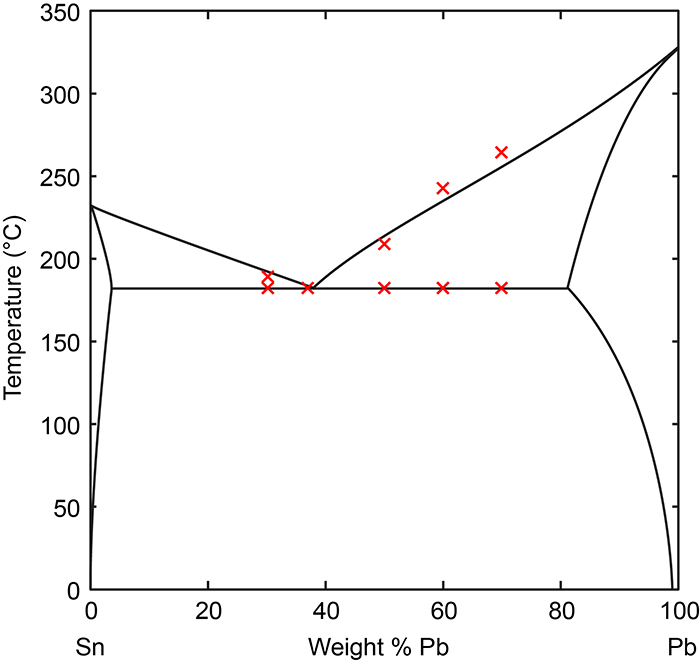
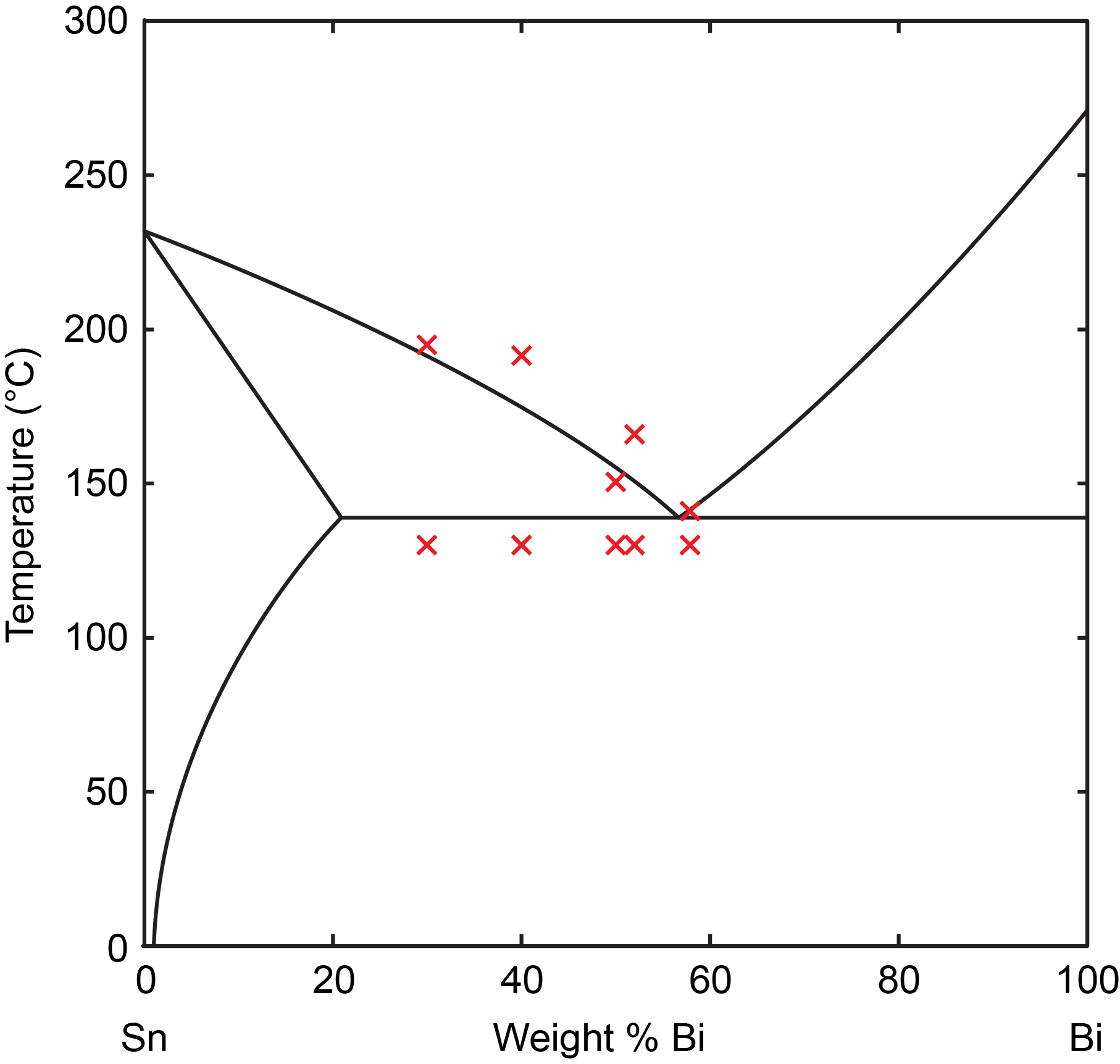
Constructed phase diagrams with experimental data in red over published phase diagrams for each binary tin alloy.
Procedure
- Prepared 5 different sample compositions of each the lead and bismuth solders.
- Used thermocouples and measurement software to take solder temperatures as they cooled.
- Polished 2 samples and inspected under a microscope to analyze structure.
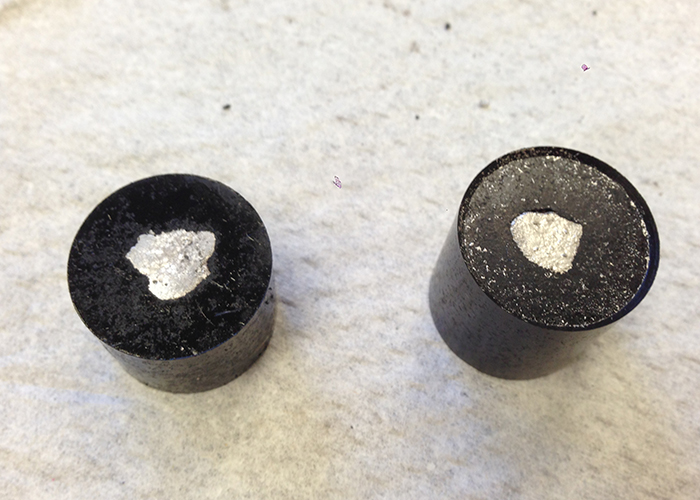
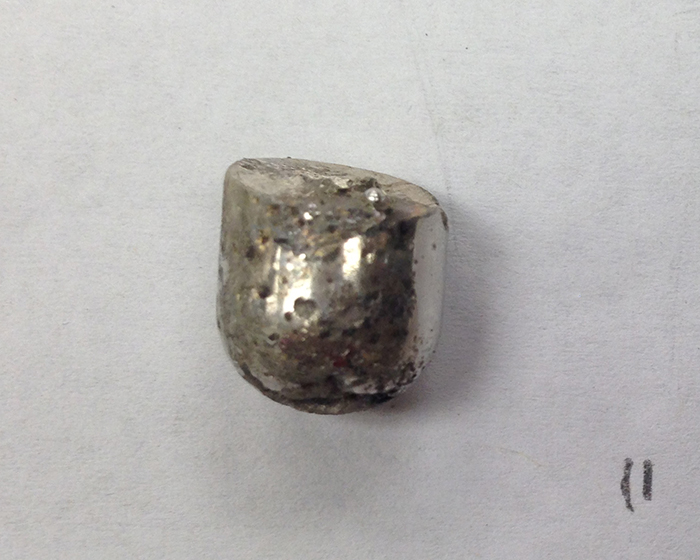
Microstructure samples before polishing (left). Freshly mixed solder composition sample (right).
Results
- Composition preparation and phase diagram construction were successful. Able to mimic published data to a reasonable degree.
- Successful microstructure analysis under microscope, but no real conclusions.
- Shear and wettability tests were inconclusive.
Lessons and Challenges
- Melting solder compositions was more difficult than anticipated, so a new method was needed.
- Better planning for test repeatability should be used, either with the equipment or methodology.
- In a repeated experiment, shear and wettability testing should be conducted with multiple trials on a single composition from each system rather than from multiple compositions for a larger sample size.


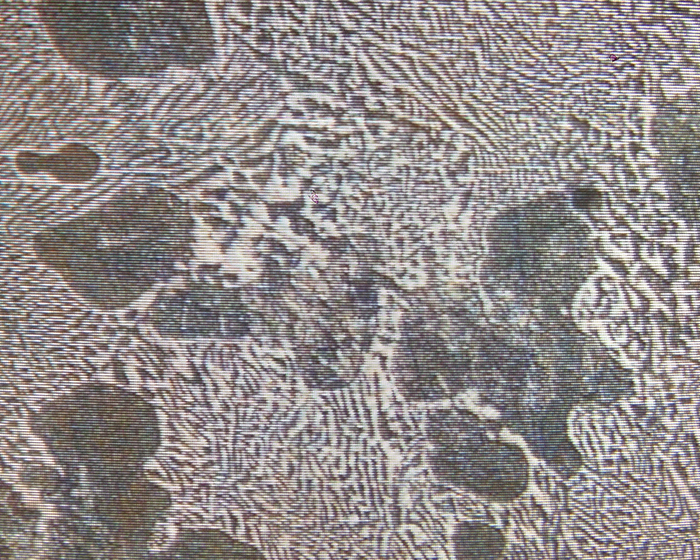
Sheared solder sample (top left). Wettability test samples (top right). Microstructure under a microscope of a near eutectic BiSn sample (bottom).